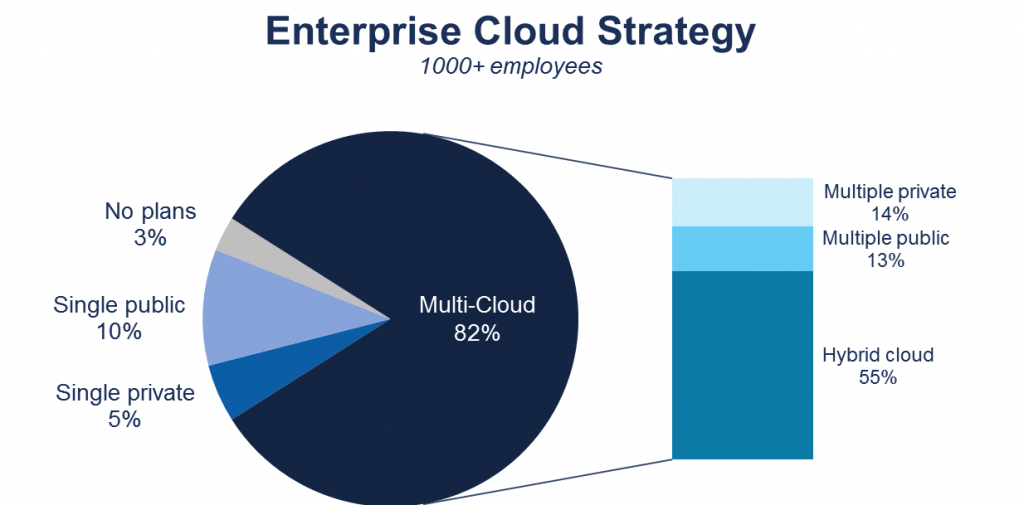Cloud computing as we know it has undergone an evolution in the past couple of years. The buildup to this change has been steady and gradual, but it has affected every aspect of the IT industry. As a result, the chief technical officers and other leaders within the IT sphere have sprung into action. Their goal? To rethink the current cloud strategy present in enterprises. These people understand that in order to stay relevant and current, modernization of their IT environment is crucial and must pave the path toward digital transformation as far as their organizations are concerned.
Success on the cloud
All this sounds easier than the actual process. We already know that a cloud infrastructure is useful when it comes to reducing expenses for IT organizations and businesses, but that is not the sole factor at play. There are others, such as these considerations:
- Any cloud infrastructure must provide the necessary degree of efficiency and flexibility.
- It must speed up the development as well as the deployment of a company’s applications.
- It must allow the reimagining process to foster new business opportunities and innovation.
One thing becomes clear from this — the process of digital transformation is not an easy one. However, there are various IT leaders who have begun to lean more toward a hybrid environment.
Why? Because apart from the constant search for flexibility and speed, the hybrid environment has proven extremely effective when it comes to modernizing the traditional investments in the IT industries while simultaneously bringing fresh products to the market. No wonder more and more enterprises are choosing to follow this path.

IT leaders have started to combine private and public clouds and also leverage cloud and cognitive technologies for the purpose of gaining greater insights. Another key benefit that businesses have experienced as a result of the hybrid environment is providing their employees with greater number of opportunities. Together, they have managed bring to life the twin goals of business transformation and innovation.
Realizing objectives through new methods

The process involved in the deployment of a hybrid cloud extends beyond the realm of IT; it is also a strong business enabler. How? Well, there are plenty of organizations that integrate cloud services, emerging technologies, and open communities with the intention of maximizing the business opportunity.
Some of the developing technologies involved with the process include blockchain, cognitive computing, and IoT (Internet of Things). Most of these organizations and businesses have taken to combining the personal on-premises processes and data with services and details available in the public cloud. This provides them a shot at positioning themselves strategically enough and helps them capitalize on the deeper insight that arises as a result of cognitive analytics.
The path to digital transformation is long, and while moving along this path, one of the key factors to determine your organization’s successes will be the way you utilize the hybrid cloud technology to your advantage and manage the emerging hybrid IT scenario. Never forget your past and do not let your future out of your sights — this will serve you well moving forward and remaining competitive in the changing cloud industry and making the most of fresh business opportunities.
Hybrid cloud management: Major factors
A process of evolution is underway for the hybrid cloud enterprise. For organizations to understand this process better, they need to evaluate their position with respect to hybrid cloud management and deployment of the set up based upon the following seven points:
- Protection of data and security: It is important that these efforts be distributed throughout the enterprise via private or on-premises cloud to public cloud networks.
- Balancing the workload and improving performance: In every environment, the business process must be integrated properly.
- Schedule for regression testing and application release: Cycles for application release should always remain synchronized.
- IT service automation: Enterprises must provision self-service options that offer actionable perspectives into the performance and health of different applications.
- Scalability and agility: These features are a necessity in organizations that are actively involved in divestures and M&A. They come in handy in areas where rapid deployment and development of intricate application blueprints are a must.
- Management and reporting of costs: Public cloud networks are usually associated with the OPEX financial model. On the other hand, on-premises optimization efforts involving the total cost of ownership rely on the CAPEX model.
- Disaster recovery and availability: Enterprises must do their part in drafting service-level agreements (SLAs) and options for the entire hybrid architecture.
Locating the right hybrid cloud management partner

It should not come as a surprise that hybrid management is one discipline that has shown tremendous potential for growth and has evolved fairly quickly. Thus, enterprises must first attempt to find partners that have a reliable and proven track record. For example, you should attempt to find partners that have prior experience managing different hybrid architectures. Your ideal partner should have the technology skills, tools, methodology, and employees. They must possess the capacity to improve your existing ecosystem through new applications.
What does the future of cloud evolution indicate?
The truth is, hybrid cloud has arrived and chances are it’s going to stick around. While a fully cloud-centric enterprise is still a ways off, the modern world of IT is no longer black and white. Companies are resorting to hybrid implementations more and more to experience cloud benefits. This is exactly why hybrid cloud management services are poised to become highly important in the coming years.
It is up to the IT leaders to determine the needs of their organizations. Only then can they help them move forward on the path to hybrid cloud and hybrid cloud management. However, it is important to ensure that you possess the proper sort of infrastructure necessary to attain your target. For example, most organizations are in need of business agility and speed for cloud solutions. They can get it from specially designed infrastructure solutions that service their workloads automatically using the most suitable resource available in the local hybrid cloud or regular cloud environment.
Photo credit: Pixabay



